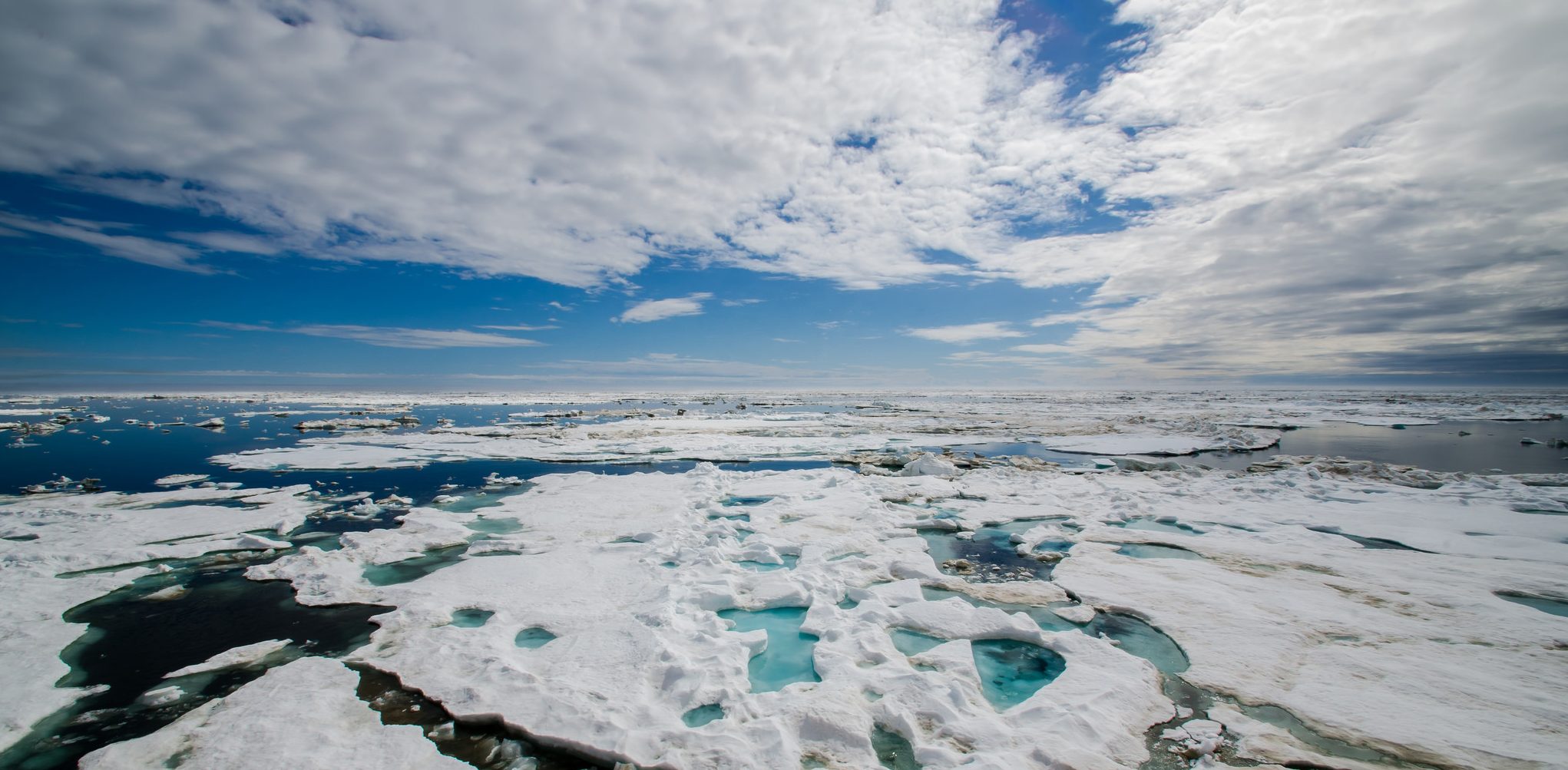Freakishly Warm Weather in the Arctic Has Climate Scientists 'Stunned'

During the Arctic winter, when the sun hides from October to March, the average temperature in the frozen north typically hovers around a bone-chilling minus 4 degrees Fahrenheit (minus 20 degrees Celsius). But this year, the Arctic is experiencing a highly unusual heat wave.
On Feb. 20, the temperature in Greenland not only climbed above freezing — 32 degrees F (0 degrees C) — it stayed there for over 24 hours, according to data from the Danish Meteorological Institute. And on Saturday (Feb. 24) the temperature on Greenland's northern tip reached 43 degrees F (6 degrees C), leading climate scientists to describe the phenomenon on Twitter as "crazy," "weird," "scary stuff" and "simply shocking."
Weather conditions that drive this bizarre temperature surge have visited the Arctic before, typically appearing about once in a decade, experts told Live Science. However, the last such spike in Arctic winter warmth took place in February 2016 — much more recently than a decade ago, according to the Pacific Marine Environmental Laboratory (PMEL) at the National Oceanic and Atmospheric Administration (NOAA). And climbing Arctic temperatures combined with rapid sea-ice loss are creating a new type of climate feedback loop that could accelerate Arctic warming, melting all summer Arctic sea ice decades earlier than scientists once thought. [Images of Melt: Earth's Vanishing Ice]
The "remarkable event" of persistent high temperatures in the Arctic was documented on Feb. 23 in a tweet by climate scientist Zack Labe, a doctoral candidate at the Department of Earth System Science (ESS) at the University of California, Irvine. Recent Arctic temperatures, represented on a graph by a red line, hovered "well above" those of previous years during February, Labe wrote on Twitter.
On Feb. 24, with reports of the temperature in northern Greenland reaching 43 degrees F (6 degrees C), it was warmer in the Arctic than it was in much of Europe, physicist Robert Rohde, a researcher at Berkeley Earth, a nonprofit that investigates climate change, wrote in a tweet.
In 2018, as of today (Feb. 26), "there have already been 61 hours above freezing at Cape Morris Jesup, Greenland," with the previous record — 16 hours — set in 2011, Rohde wrote on Twitter.
High temperatures such as these occur in the Arctic when amplified, wavy patterns in the jet stream — conveyer belts of wind that carry heat and water vapor around the planet — interact with strong storms in the northern Atlantic Ocean, James Overland, an oceanographer with PMEL, told Live Science.
Get the world’s most fascinating discoveries delivered straight to your inbox.
"They're bringing warm air and moisture from the south into the central Arctic," he said.
"We've seen something like this once every ten years in the past, but this is the second major example of this happening in the last couple of years. What's different this time is that we have less ice and thinner ice in the Arctic. When you bring warmer air north, it doesn't cool off as fast as it used to," Overland explained.
Sea-ice cover in the Arctic is thinning faster than expected and reached record lows in recent years. By 2017, it had declined so much that NOAA scientists declared in the agency's annual Arctic Report Card that the region would likely never again return to its "reliably frozen" status of the past. Without those masses of cooling sea ice, warm air brought to the Arctic can penetrate further inland than it ever did before and can stay warmer longer — which drives additional melting, according to Overland.
"We may be losing ice in the Arctic faster than we thought," he said.
The scope of sea-ice loss over time emerges in an animation that Labe tweeted in November 2016 visualizing how thicker and usually older sea ice has declined since 1979.
Overall, Earth is warming at a rapid pace — 2014 through 2017 rank as the hottest years on record — and the Arctic is warming twice as fast as anyplace else on Earth, NOAA recently reported on its website. This raises unique challenges for not only Arctic wildlife but also indigenous people who depend on Arctic ecosystems to survive, including more than 40,000 people who inhabit the Alaska coastline, according to the NOAA report.
"My biggest concern is that these warm air intrusions seem to be becoming both more common and more intense," Rohde told Live Science in an email.
"This suggests that the warming in the Arctic may have passed a threshold where we can no longer count on the polar jet stream to maintain the historical weather patterns in the northern latitudes," Rohde said. "A destabilization of the dynamics around the North Pole may lead to more extreme winter weather variations in the northern mid-latitudes and further accelerate the decline of Arctic sea ice."
Previously, climate forecasts predicted that Arctic summer ice would disappear entirely by around 2060, Overland told Live Science. But based on what scientists are seeing now, the Arctic may be facing ice-free summers decades sooner than expected.
"We're looking at sea-ice loss within 20 years, rather than 40 years," Overland said.
Original article on Live Science

Mindy Weisberger is a science journalist and author of "Rise of the Zombie Bugs: The Surprising Science of Parasitic Mind-Control" (Hopkins Press). She formerly edited for Scholastic and was a channel editor and senior writer for Live Science. She has reported on general science, covering climate change, paleontology, biology and space. Mindy studied film at Columbia University; prior to LS, she produced, wrote and directed media for the American Museum of Natural History in NYC. Her videos about dinosaurs, astrophysics, biodiversity and evolution appear in museums and science centers worldwide, earning awards such as the CINE Golden Eagle and the Communicator Award of Excellence. Her writing has also appeared in Scientific American, The Washington Post, How It Works Magazine and CNN.


